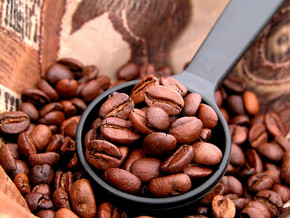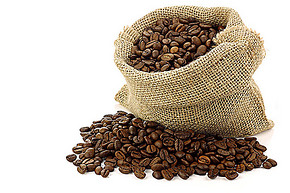Introduction of Narinho Coffee beans in Coffee producing area of Colombia
Pay attention to coffee reviews (Weixin Official Accounts vdailycom ) and find a beautiful cafe to open your own shop
Narino: geographical location
Narino, translated as "Na Linglong" in the domestic coffee industry, is really poetic and aesthetic, which makes people think of Xu Zhimo's "Feilengcui".
There, Neo.
It is a province southwest of Colombia, 640 km from the capital Bogota. It borders Ecuador to the south, Cauca to the north, Huila to the northeast, Putumoyo to the southeast and the Pacific Ocean to the west.

Narino: First Certificate of Protection of Origin
The above has already introduced the general situation of Colombia coffee. When it comes to Colombia coffee, it has to be mentioned that FNC, the Federation of Colombia Coffee Producers, has a long history and was established in 1927. It is fully responsible for coffee-related matters, including coffee planting technology research, sales, marketing, quality standard construction, coffee farmer education and training, etc. Its proud works include Juan Valdez marketing plan of that year, which enabled Colombia coffee to successfully enter the U.S. market. and help Colombia coffee become synonymous with quality.
In 1996, FNC set out to promote Colombia Specialty Coffee and establish a hierarchy.
In 2011, Narino became the first region to receive Denomination of Origin certification.
Origin Status Denominator is common in agricultural production. The quality of crops has an important relationship with the growing environment. Some areas have natural advantages in the cultivation of certain crops, such as wine, which is familiar to the public. However, it does not only include congenital factors such as microclimate, but also the historical and cultural background of the place of origin needs to be considered comprehensively. It is not only the planting process that affects the quality, but also the post-harvest processing. The cultural and historical background will be reflected in this process.
Narino: Coffee growing and processing
Narino has the natural conditions for producing high-quality coffee: close to the equator, about 1 degree north latitude, full of light throughout the year; more than 1600 meters above sea level, snow peaks in the territory are not uncommon, steep mountains and narrow steep slopes bring diversity of temperature, warm and humid air rising from the canyon makes coffee planted at high altitude free from the threat of frost, coffee can be planted smoothly at a height of 2300 meters; volcanic soil provides rich nutrients for coffee growth.
Narino has a peak-shaped rainfall distribution throughout the year, with a rainy season lasting from October to May of the following year, and a dry season of June, July and August. But even in dry months, coffee farmers don't have to worry too much. Warm trade winds from the southern continent combine with cool nights to produce water vapor, which replenishes coffee trees.
Usually, after a continuous dry season followed by a rain, the coffee tree will usher in the flowering season, in Narino, after the first rain in September, the coffee flowering season will begin in April of the following year, and the harvest season will continue until August in high-altitude areas.
NARINO producing areas are dominated by small farmers. After coffee harvest, most of them will be washed and processed by coffee farmers themselves. As long as the method is correct, the quality of coffee can still be guaranteed. Usually, coffee is picked, processed by an artificial peeling machine, placed in a container for 12-18 hours of fermentation, then washed and dried. The drying method is sun drying on an arc-shaped elevated bed.
NARINO is close to the equator and may often encounter rainfall during harvest season. Unlike other producing areas, NARINO uses an arc cover with openings at the bottom of both ends to ensure air circulation. When it rains, the arc not only facilitates drainage but also avoids condensation of water droplets on the top of the cover.
Narino: The quality is very NB
In 2010, the Colombia COE contest was held in Narino, which won the top six, with Top10 accounting for 8 and Top21 accounting for 17. The high quality is evident from this. Colombia coffee has always been known for its high quality washed coffee, narino continues to build on its established quality.
Narino: coffee certified depression
Various certifications are popular in the specialty coffee field, such as Fair Trade, but there are some exceptions to this in Narino.
There are about 30,000 coffee farmers in the entire Narino region, but according to a 2012 fair trade promotion organization, there is only one fair trade certification body in the region with fewer than 300 members. Narino was honored to be chosen as a pilot for the organization's outreach.
Certification is for higher prices, and narino coffee doesn't have to worry about price.
First of all, the great FNC has a great commitment to buy the entire production of coffee farmers across the country at a reasonable price that is not lower than the market price. Then, benefiting from the high quality, narino coffee is priced higher. Third, narino coffee's big customers are starbucks and nestle coffee, which each have their own certification standards, and meeting these certification standards makes narino coffee quality and price even higher. So not bad money, certification naturally lack of market.
Narino: Coffee tourism at the right time
Local coffee organizations have developed coffee tours, which range from 2 to 7 days and cost about US $30 per day. Tourists can eat and live in farmers 'homes, visit farmers' lives, learn about various farming practices, and participate in person if they like.
Important Notice :
前街咖啡 FrontStreet Coffee has moved to new addredd:
FrontStreet Coffee Address: 315,Donghua East Road,GuangZhou
Tel:020 38364473
- Prev

How to make a cup of Colombian coffee?
Following Cafe Review (Wechat official account vdailycom) found that Beautiful Cafe opened a small shop of its own to control the size, quantity, water and brewing methods of coffee powder. Freshly ground coffee with fresh beans has the best flavor. It takes 12 grams of coffee powder to make a standard cup of coffee (about 4 to 5 ounces). Generally acid beans are roughed and bitter beans are finely ground. When making light coffee, it can be thicker and thicker.
- Next

What are the grades of Colombian coffee beans?
Following the comments (official Wechat account vdailycom) found that Beautiful Cafe opened a small shop of its own. According to the classification of defective beans, defective beans are divided into two types:-first: called first-level defects-second: called second-level defects first: main defects (defects affecting coffee taste characteristics): black beans, moldy beans or sour beans private raw bean exporters: first-level defects.
Related
- Detailed explanation of Jadeite planting Land in Panamanian Jadeite Manor introduction to the grading system of Jadeite competitive bidding, Red bid, Green bid and Rose Summer
- Story of Coffee planting in Brenka region of Costa Rica Stonehenge Manor anaerobic heavy honey treatment of flavor mouth
- What's on the barrel of Blue Mountain Coffee beans?
- Can American coffee also pull flowers? How to use hot American style to pull out a good-looking pattern?
- Can you make a cold extract with coffee beans? What is the right proportion for cold-extracted coffee formula?
- Indonesian PWN Gold Mandrine Coffee Origin Features Flavor How to Chong? Mandolin coffee is American.
- A brief introduction to the flavor characteristics of Brazilian yellow bourbon coffee beans
- What is the effect of different water quality on the flavor of cold-extracted coffee? What kind of water is best for brewing coffee?
- Why do you think of Rose Summer whenever you mention Panamanian coffee?
- Introduction to the characteristics of authentic blue mountain coffee bean producing areas? What is the CIB Coffee Authority in Jamaica?

